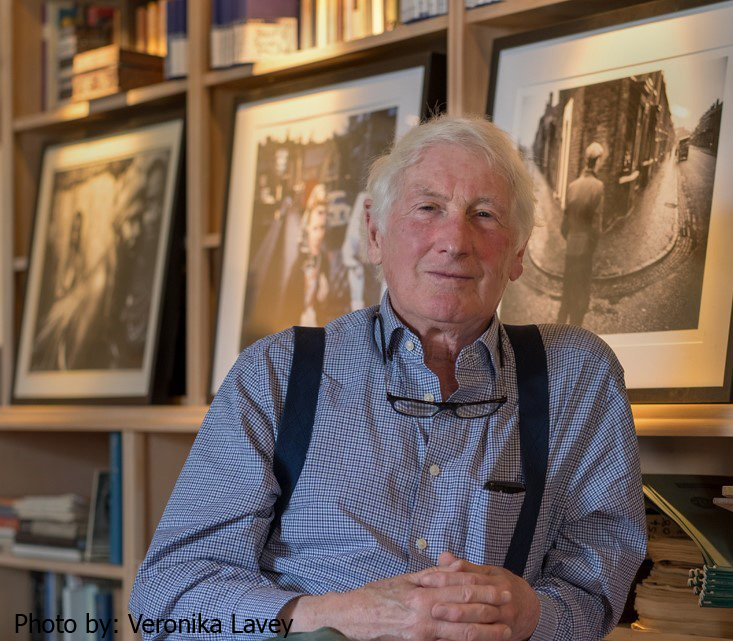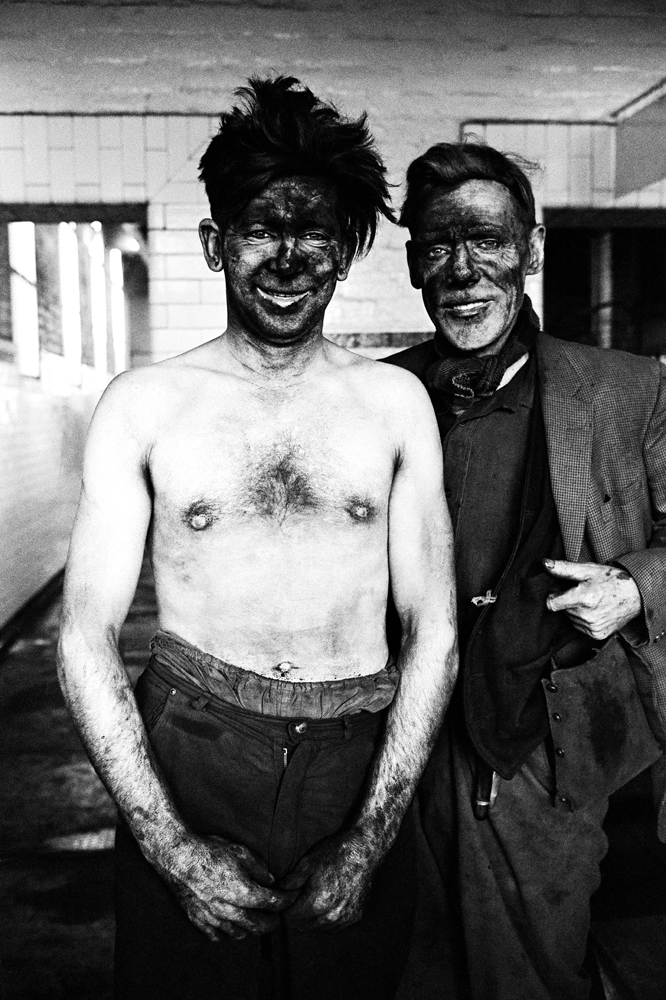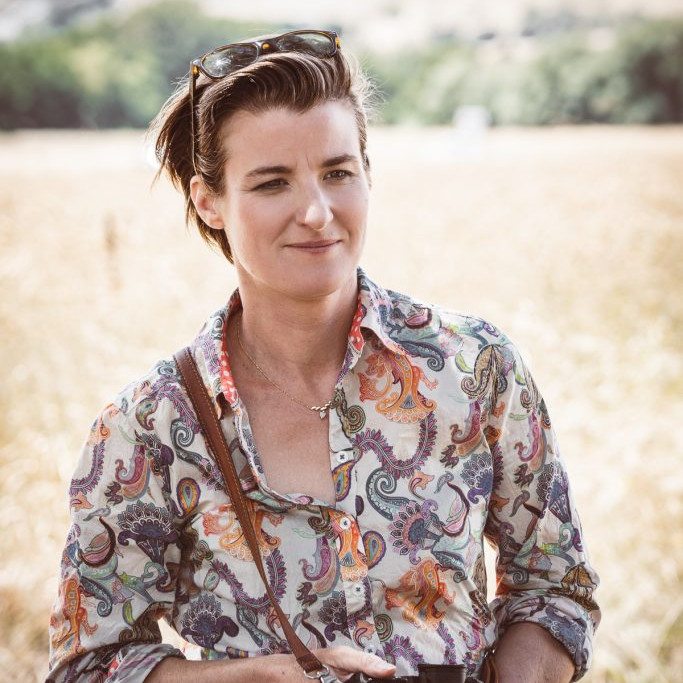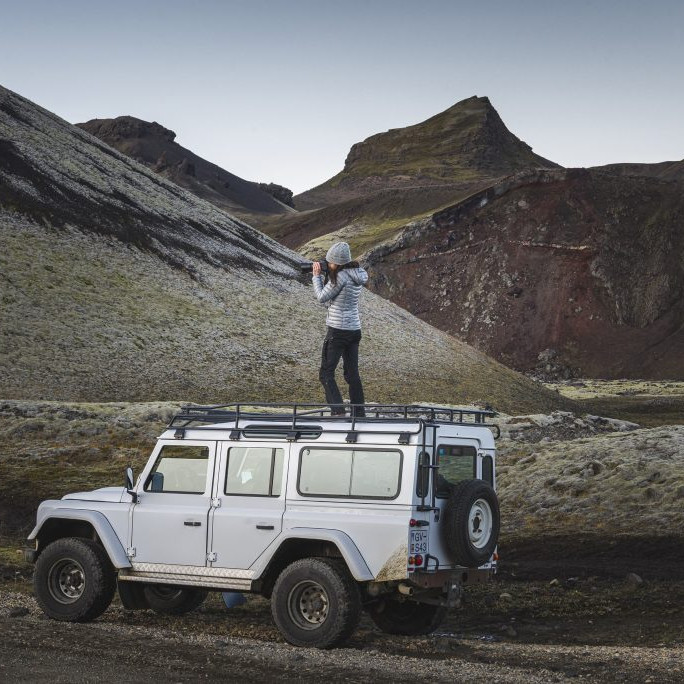John Bulmer Photographer
PHOTOGRAPHS BY JOHN BULMER, POPPERFOTO – COPYRIGHT – MAY NOT BE REPRODUCED WITHOUT PERMISSION.
From your years, of photography in the professional world, discuss the introduction of both colour and digital photography.
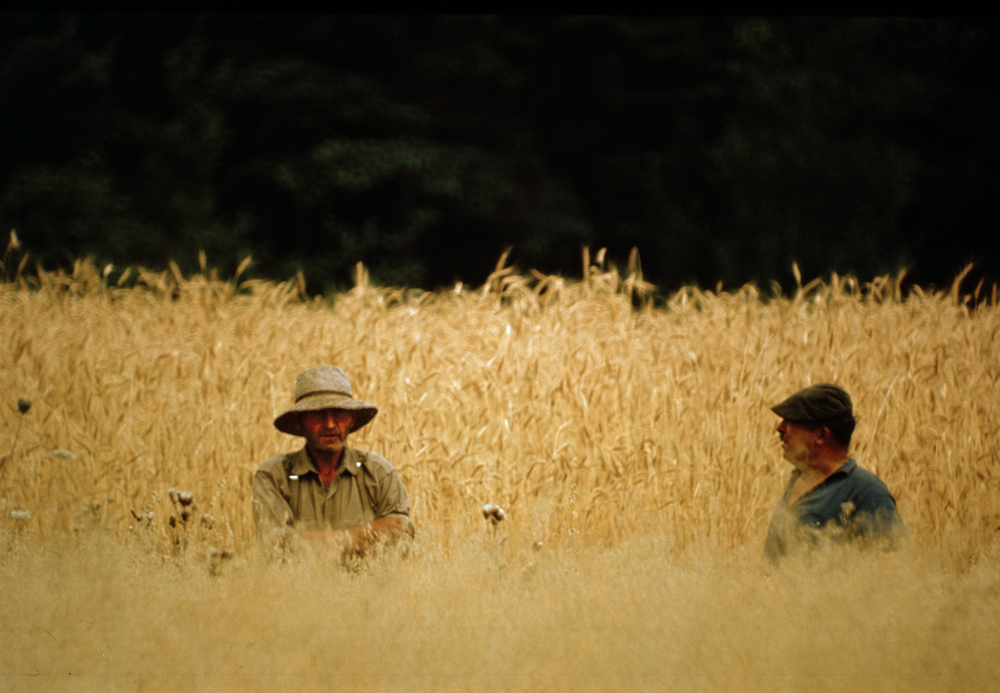
France, Photograph by John Bulmer
I was trained as an engineer and have always believed in using the latest and best technology.
Colour is an interesting subject. We see the world in colour, so the introduction of black and white photography in the 19th Century was quite an odd event.
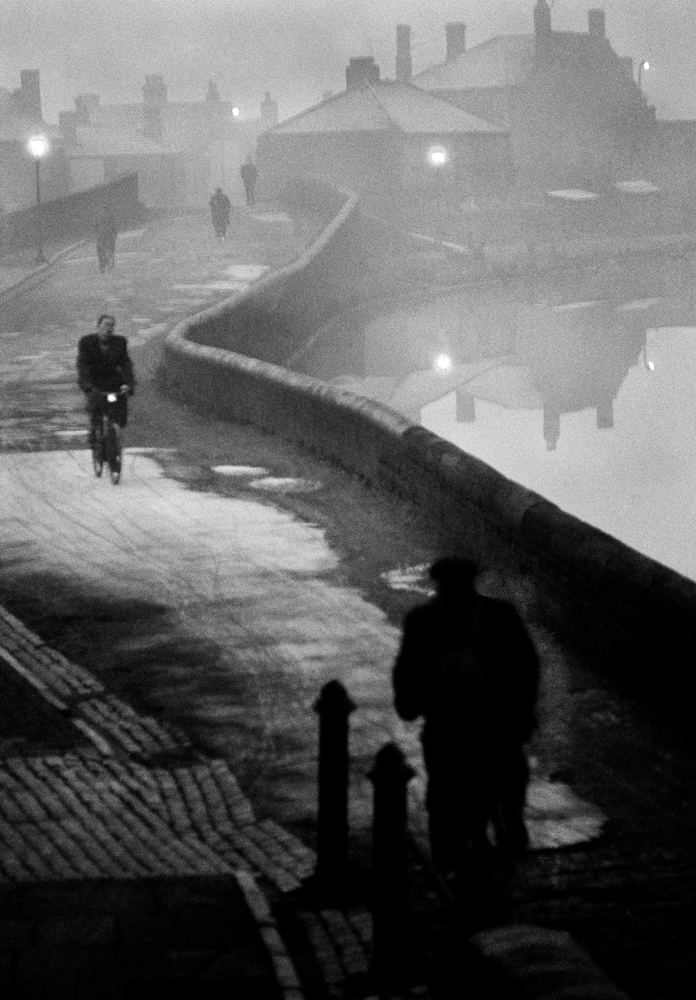
Black Country, Photograph by John Bulmer
It had its advantages. The process of photography is a form of abstraction. The world is a complicated place, and what we are doing in a photograph is trying to simplify and arrange the items within an emotional impact. Adding the element of colour complicates this process.

Black Country, Photograph by John Bulmer
Digital cameras are simply a better tool to achieve the image we strive for. At first, they had problems with quality etc. But to me, there is absolutely on point in struggling with an old fashioned tool when there is a much better one at hand.
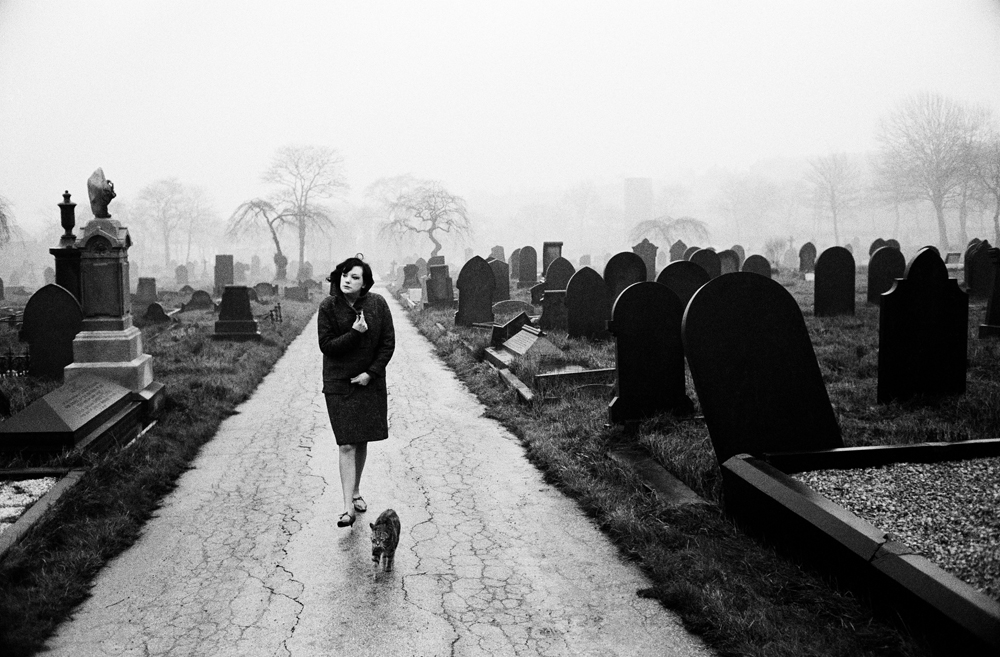
The North Series, Photograph by John Bulmer
Can you discuss one or two images where you have used colour and it has led to highlighting the drab or bleakness of place?
In 1965, I was asked to do a whole issue of Sunday Times colour magazine on “The North”.
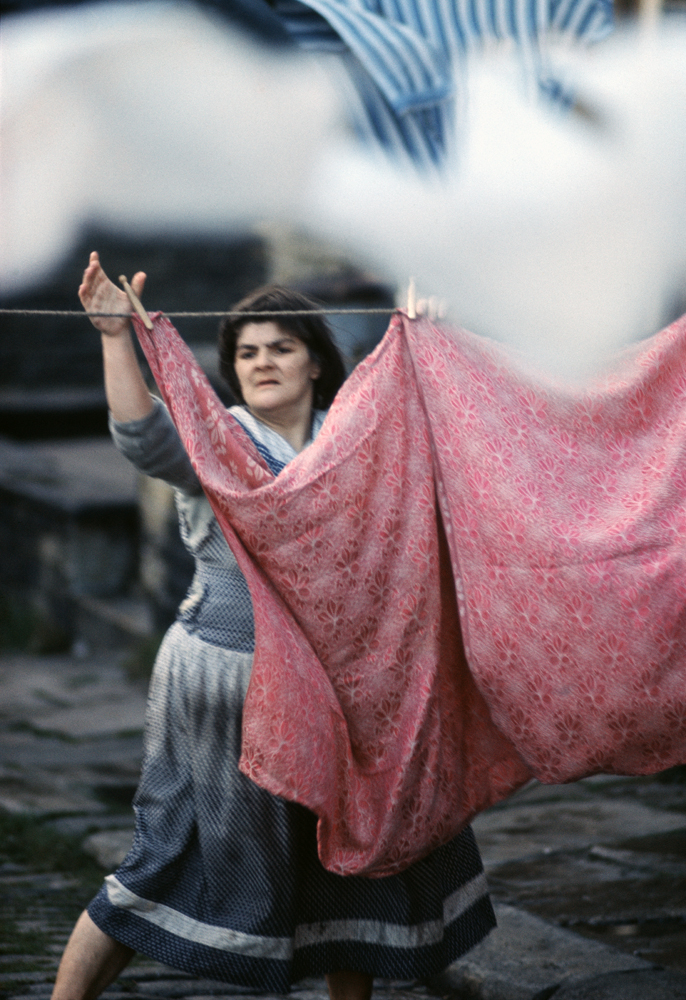
Woman hanging out washing, Halifax. Photograph by John Bulmer
This was the cover Picture for the Sunday Times Magazine.
This was a magazine primarily in colour, and clearly it would have been a cop-put to take only pictures in black and white, yet I struggled to see how I could get across the right emotional image of the changing industrial north by taking pictures of cobbled streets on a sunny day. I therefore decided to work in winter, and use fog and rain as much as I could to simplify the distracting backgrounds of the industrial landscapes and terraced houses.

Miner and his pit Pony, Durham, 1965, Photograph by John Bulmer
This was hard as colour film was so slow and had poor latitude.
Tell us about one of your early photographs that led to your work becoming part of the publishing world.
I think the picture that changed my life was this one of a student climbing the window of Kings College Chapel, Cambridge, where I was studying Engineering.
We sold it to life magazine, and it also ran on the font page of the Sunday times. I was expelled from Cambridge but landed a job on the Daily Express in London as a news photographer. This was a great compat experience and gave me a good start to my career.
Discuss the importance of composition in photography.
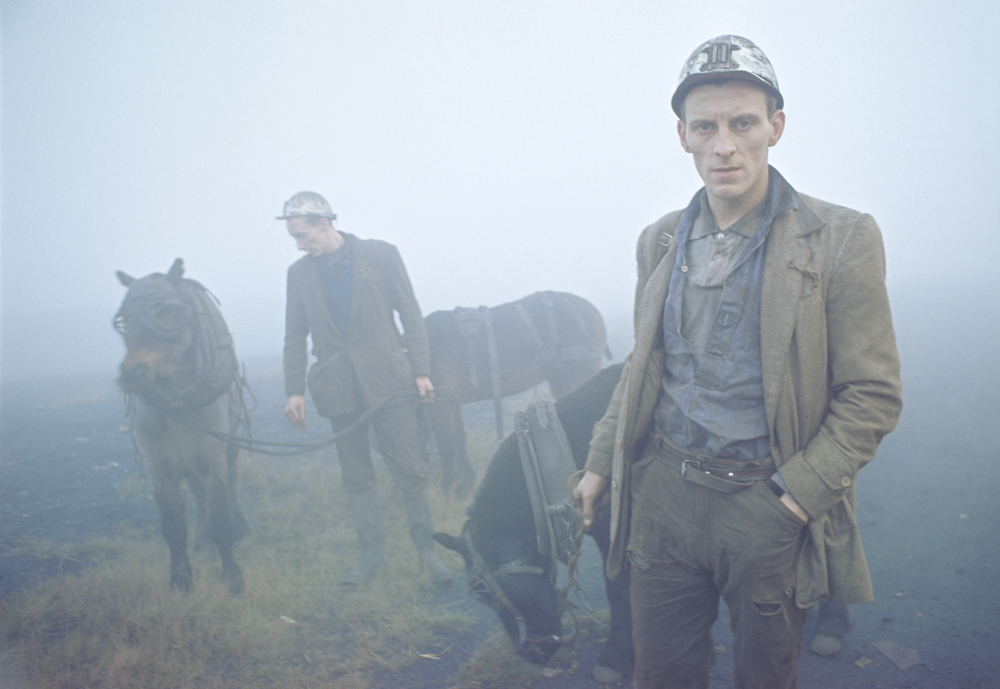
The North Series, Photograph by John Bulmer
Discuss the importance of working in a series as an artist.
Although an individual great picture is a wonderful thing to me the satisfaction of working on a picture story and building up a set of images around an issue gibe the most satisfaction. The same thing drove me to film making, where you have a beginning, middle and end. Where the whole process moves forward, so is less repetitive.
The most important things in a photograph are:
That the subject is interesting.
That the viewers eye knows where to go and is not take out of the photograph.
This combination need to give a strong emotional impact.
It’s hard to make rules about how to do this, and that is one of the things that give photographs their magic
Your comment, “The switch to colour was, therefore quite sudden and few photographers were prepared for it.” Discuss.
When I started as a professional in the early sixties the climate for photography in Britain was not great. The magazine “Picture Post” has closed and apart from the newspapers there were few outlets for photography. Life Magazine in the USA ran some great picture stories, but they, where all in B&W. Colour was used only for the advertising, fashion and a few travel stories.
The Sunday Times Colour Magazine, as it was called, was the first magazine in the world to use colour as the standard for photojournalism. The photographers who had worked for the picture post were not used to working in colour, and to my mind many went out and shot black and white picture with colour film in their cameras. The pictures were not simple enough – colour was an extra distraction.
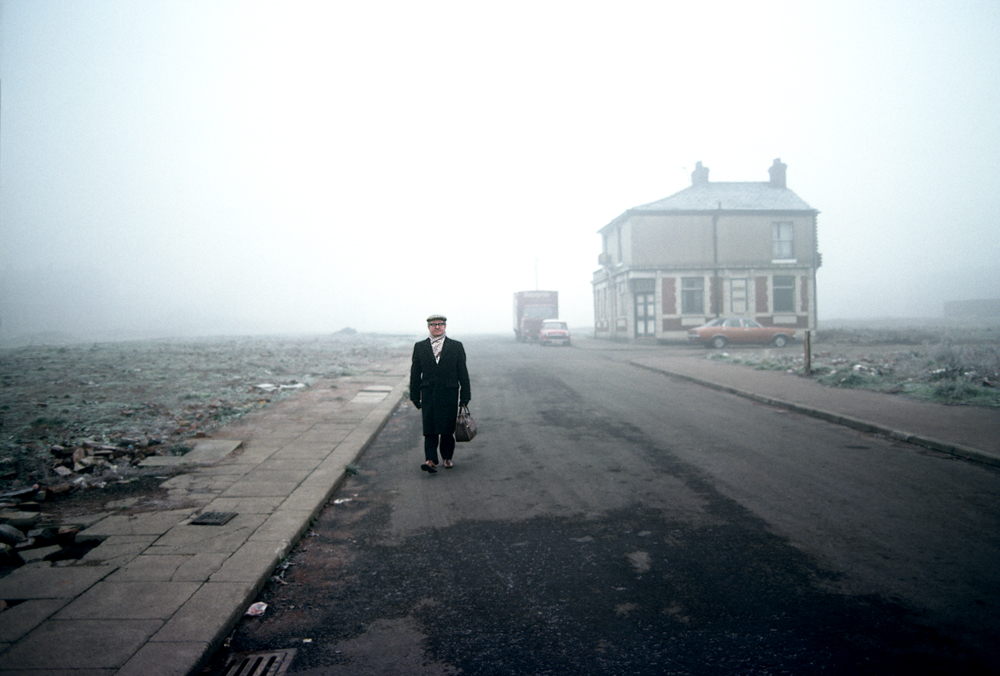
It seems odd now, when we are so used to colour, but from the start photographers had got in the habit of thinking in black and white and need to change that thought process.

Manchester Series, Photograph by John Bulmer
You have traveled extensively, how is the represented in you work?
What matters in photography is not where it is taken, but whether the subject is interesting.
When I first went to the industrial north in 1960 I remember thinking that it was a exotic as darkest Africa. The 1960’s were a time when Britain was outward looking. The colonial era was ending and it had become easy to travel to the far corners of the earth. The Sunday Times had the money to do it and the world was full of interesting stories.
Show us two or three of your photographs that tell a whole story.
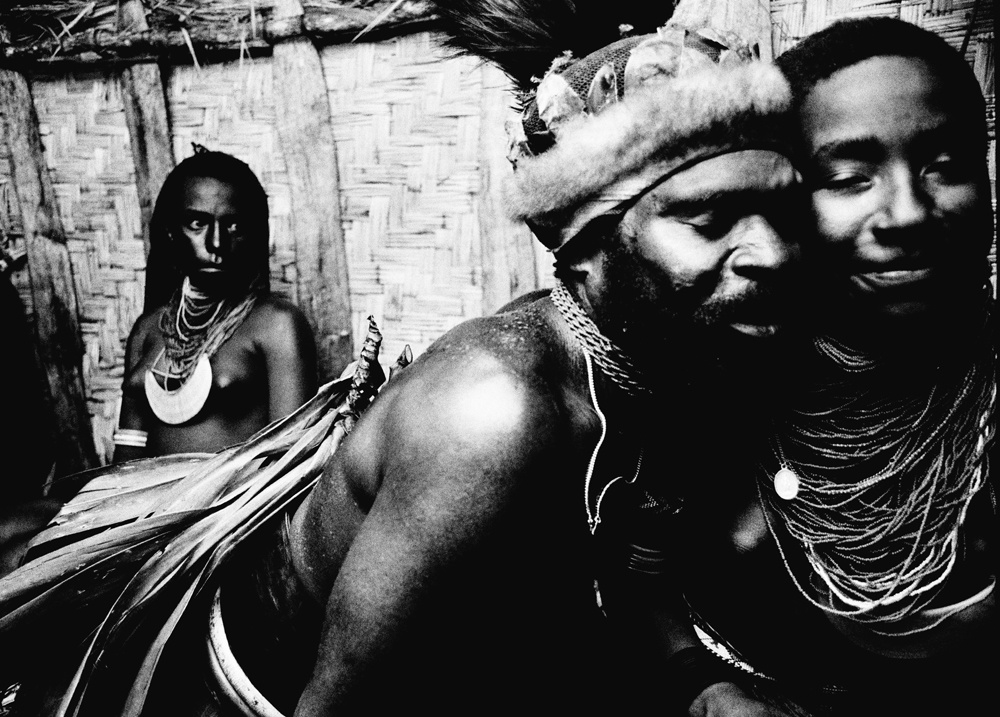
New Guinea Courting, Photograph by John Bulmer
The same human emotions apply in every society.
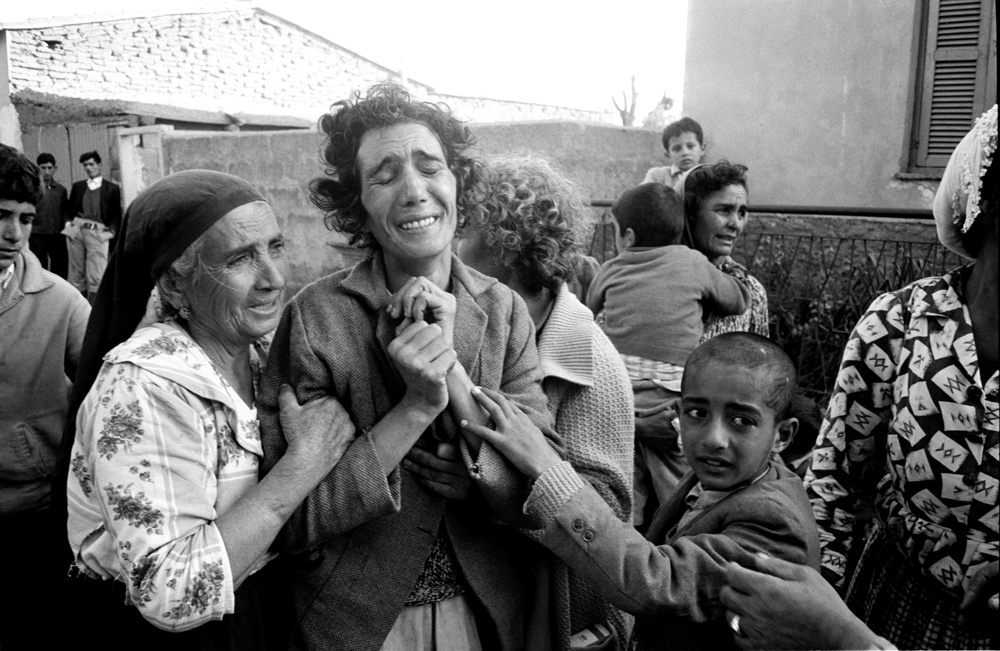
A woman in Cyprus grieving her husband and son, Photograph by John Bulmer
North Miner, Photograph by John Bulmer
Discuss how you have been able to photograph ‘people’ – venture into their private lives.
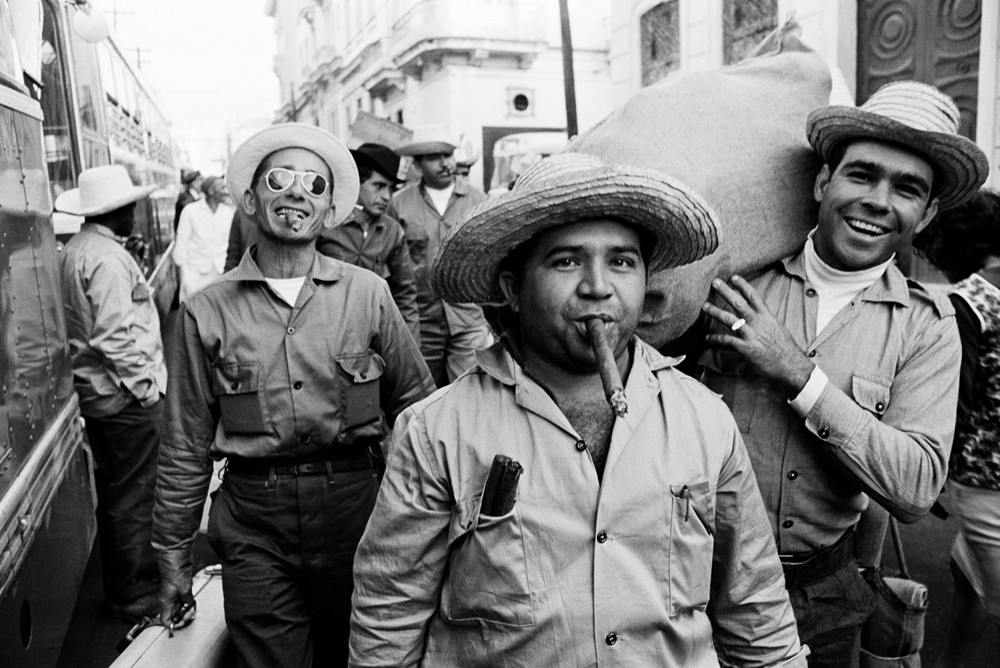
Cane Cutters, Photograph by John Bulmer
As a teenager, I fell in love with the “Decisive Moment” picture of Cartier Bresson. I have always aimed a being a “fly on the wall” photographer rather than someone who directs or intimidates their subjects. I am not suggesting one is better than the other, it’s a case of what works for you. When I did have an assignment to make a portrait of someone, I tried to put them at their ease rather than formally posing them, and where possible catch them off their guard. Sometimes I would say I had finished and shoot just as they relaxed.
How has new editorial staff shaped or changed your photography?
The people who have shaped my career have been, Tim Wolsey (Designer) and David Hughes (Editor) at the Town Magazine, the Michael Rand (Art director) and Godfrey Smith (Editor and others at the Sunday Times Magazine. They gave me freedom and encouragement (and of course assignments) and I will always be grateful.
What have been your favourite cameras over the years and why have you updated them?
I have never been a fan of square pictures, I find the 2 x 3 shape of the 35mm camera much better for composition. I started with a Canon then Leicas with wide-angled lenses and a Nikon F for longer lenses. At that time, they were the best available. Leicas were no good for long lenses and the SLR did not have good fast wide-angle lenses, they were also difficult to focus quickly. This meant carrying a lot of cameras in the days when you needed different bodies for Colour / B&W or fast/ slow film. Later I changed to the Olympus OM1 System. The lenses were very good and being smaller and lighter they were a great relief to my back. In the nineties, when I was mostly making films, I changed to the Canon EOS system, as I needed the autofocus for my imperfect eyes.
When Digital came of age; I moved on to the Canon Digital bodies, which over time graduated to a good resolution and speed. In time, I found the weight and size of the Canon system a bit of a distraction and looked for a half frame mirrorless camera.
I started with a Panasonic but found the delay in the viewfinder an unsurmountable problem. The first system to overcome this was the Fiji X series and I now have a Fuji XT-2 and and XT-3. These give results almost indistinguishable from the full frame cameras and are much smaller, lighter and more discreet.
Discuss photographs where you have used the written word to great effect within the image.
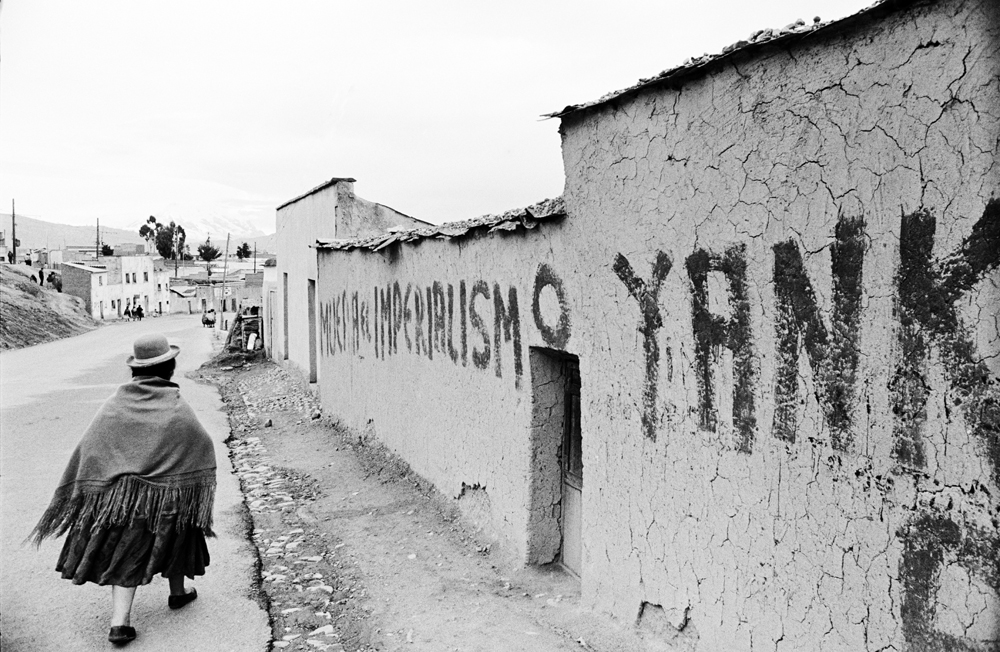
Photograph by John Bulmer
I have always felt that a photograph needs to speak for itself, and the modern desire for so much explanation dilutes the power of the image. Word within the image are a different issue, and I certainly like to do that when the opportunity arises. As with all pictures my preference is for the “decisive moment” of life as opposed the staged image, but there are no rules, and both can be powerful.
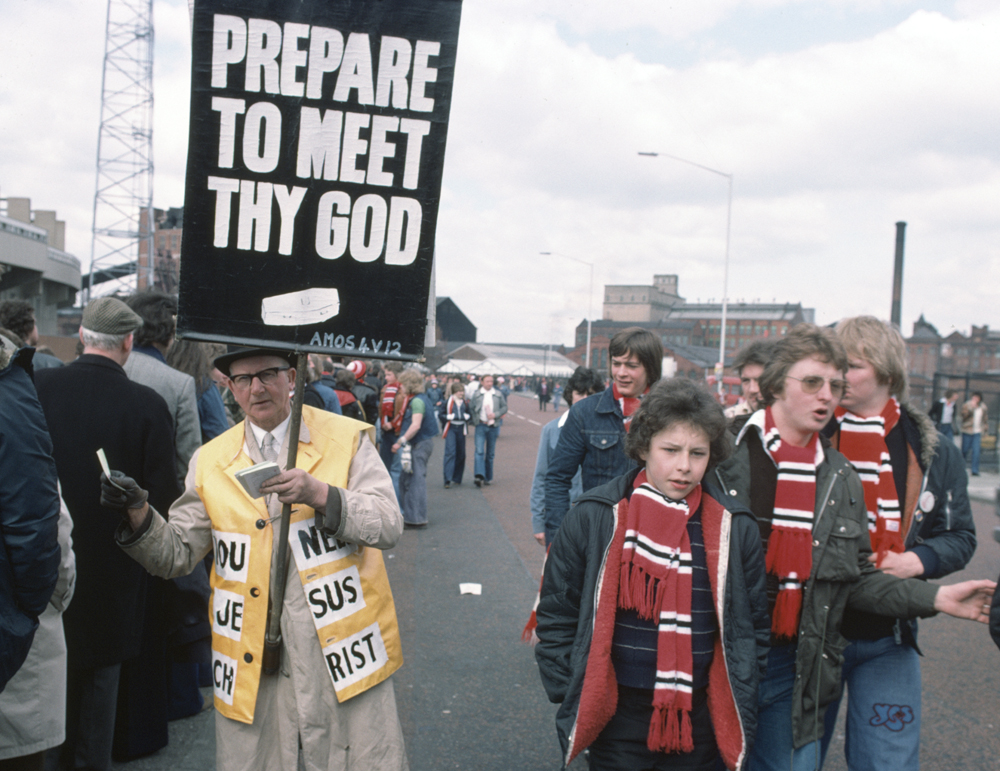
Photograph by John Bulmer
Tell about some ‘famous faces’ you have photographed and why they have become so memorable?
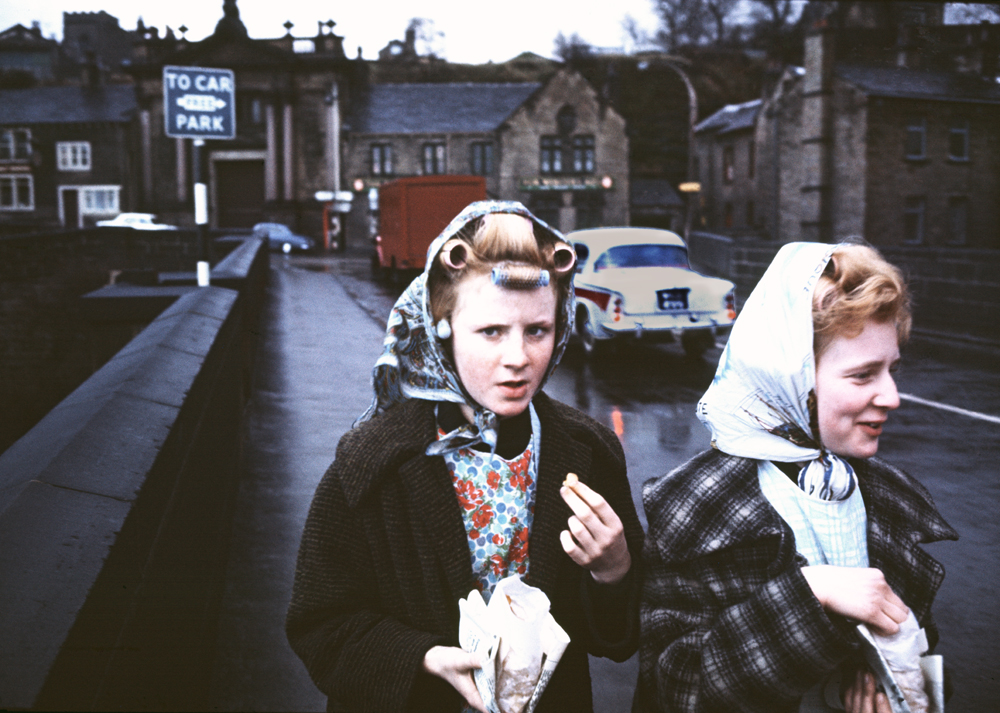
Two Mill Girls, Photograph by John Bulmer
These two girls, I photographed in 1965. The picture was used in the Sunday Times Magazine and on the cover of my book. “The North” I met one of them thirty yearls later in a BBC TV Studio. The have become the face of the north for me.
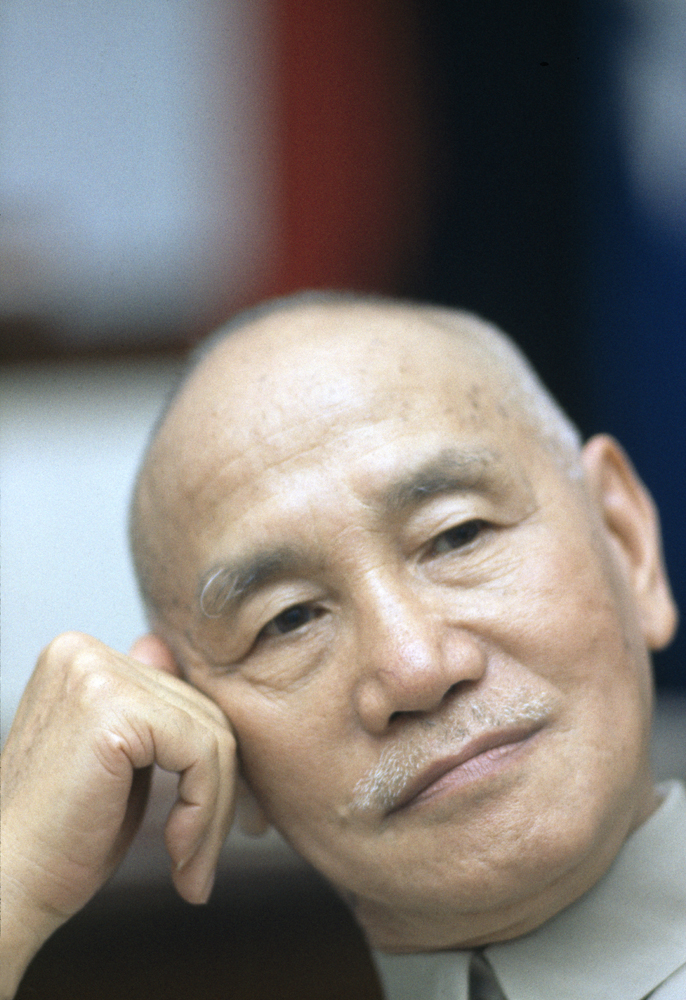
Chang Kai Shek, Photograph by John Bulmer
Chang Kai Shek, at one time the leader of the largest country in the world. This was one of my hardest assignment, there was such security around him that it was hard to get near, and I had my cameras and body searched, I was aware that he had the power to kill or torture anyone that displeased him. That was obviously unsettling.
Another was the Queen, I have photographed her on many occasions, but my favourite is this one with Haile Sellaisse in his carriage. The airport when she arrived in Addis was so chaotic that I could not get near, and only after running for nearly a mile at high altitude did I get this shot.
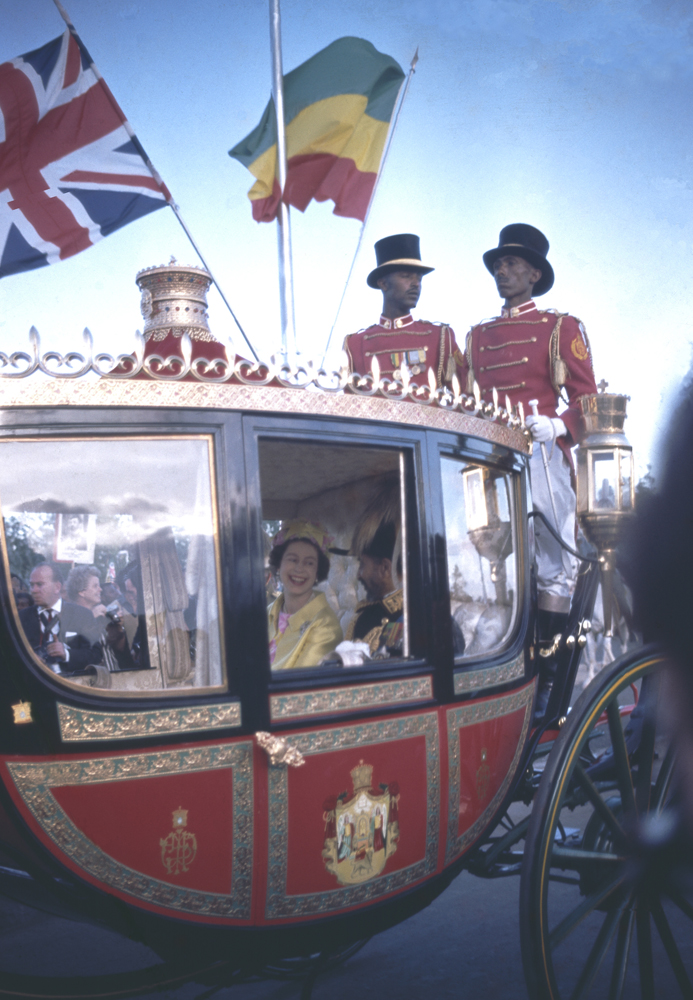
‘Thelonius Monk’ 1960 – discuss.
I believe you have to make the image and framing in the camera, and that’s one reason I don’t like square format cameras. The chance of finding a good composition in the darkroom are minimal.

Thelonius Monk, Photograph by John Bulmer
This picture of Thelonius Monk, I was backstage at the theatre, and found a small tear in the curtain at the back of the stage. I enlarged it just enough to get my lens through the hole.
Expand on your photograph North Korea, 1973, Sunday Times.
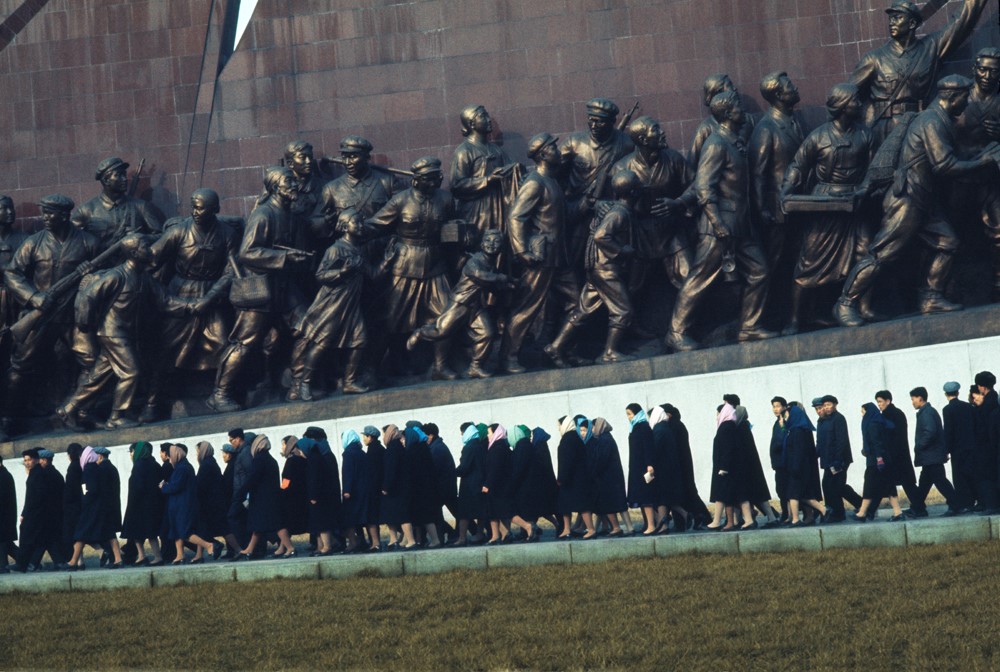
North Korea, Photograph by John Bulmer
North Korea was the hardest place I have ever worked. We were under constant survalence, and were not allowed to photograph anything they did no approve. I resorted to photographing out of a lavatory window to show how ordinary people lived
Expand on your sideways move into film photography.
By the early 1970’s The Sunday Times ran into a problem. The advertisers complained that the editorial shown alongside their adverts – Biafta, Vietnam and social realism, were not compatible with the comfortable lifestyle they were trying to promote.
The Sunday Times Magazine had a new editor, who called me into his office and said, “We are looking for stories on crime, middle class living and fashion.” I knew it was time to move on.
I had also found that travelling the world was a lonely business, and I was going out day after day and making the same compositions of people without really getting deep into their culture.
How did this happen?
I was offered the first visa to Burma that any photographer had been given since the war. The Sunday Times were not interested, so I went to the BBC and said, “I’ve never made a film in my life, but I’ve been given this Visa. Will you give me the Money” They said, “Yes” and we made a 50 minute film for “The World About Us.”
What did you have to learn to make the changes needed?
What can you say in hindsight?
It was a big change, fortunately I was technical enough to be able to use a professional 16mm film camera. Other photographers I knew made films using another cameraman, this often led to frustration. At first, I tried to make every shot composed like a still photo. This led to rather static camera work, so I learned to accept that the camera needed to flow more, even at the expense of composition. Film making is team work, and this was hard having been a loner.
Decisions at the BBC and all TV were made by words people, unlike the Sunday Times, and I think to this day that problem persists. I think now some cameramen have been to art school, and the visual quality of TV has improved a lot.
I retired from film making a little over ten years ago, as humping a heavy camera around very wild places is a young man’s sport. The commissioning editors at the BBC / Discovery Channel etc. were changing and wanted young presenters to guide the viewer. I preferred films where the locals spoke for themselves and felt it was time to move on.
I returned home to archive my still pictures and have published two books, ‘The North” which is eight assignment from the sixties and early seventies on the changes in the industrial north of Britain. “Wind of Change” which is about the end of the colonial era all over the world.
In hindsight, I have no regrets. Many of my colleges moved into advertising and commercial work in the seventies, when the editorial market changed. I found that sort of work depressing, and instead had an extraordinary life travelling to and spending a significant amount of time in the most exotic and amazing locations.
I have now transferred my archive to Popperfoto who I know will take care of it, and market the pictures through Getty images. I have seen a number of photographers leave their archive with academic institutions where the pictures will sit in a vault and never be seen again. This way I think I will have the best chance of the images being looked after and seen by as many people as possible in the future.
John Bulmer
john@johnbulmer.co.uk
http://www.johnbulmer.co.uk/
Deborah Blakeley, Melbourne, Australia
Interview by Deborah Blakeley, July 2019
Think a colleague or friend could benefit from this interview?
Knowledge is one of the biggest assets in any business. So why not forward this on to your friends and colleagues so they too can start taking advantage of the insightful information the artist has given?
Other artists you may be interested in:


